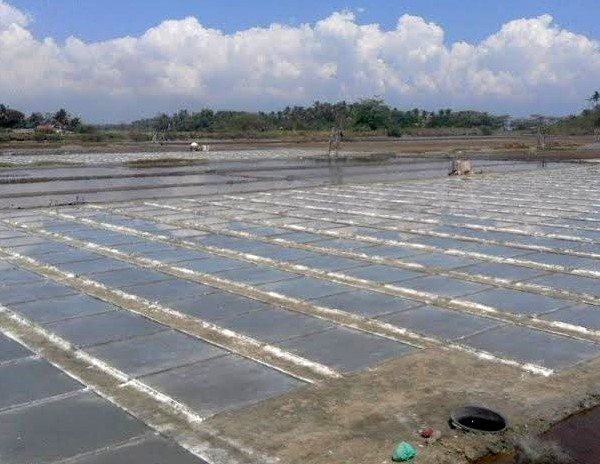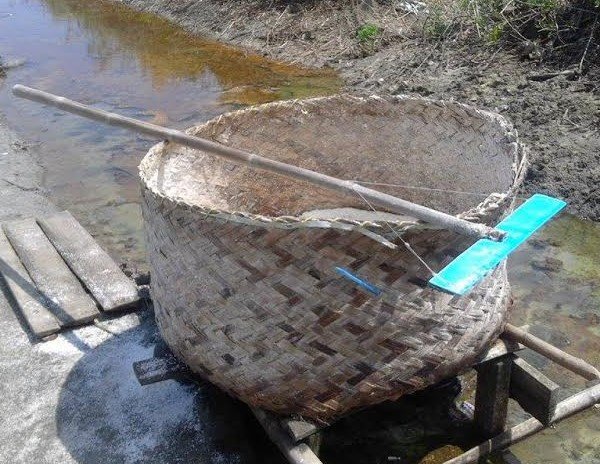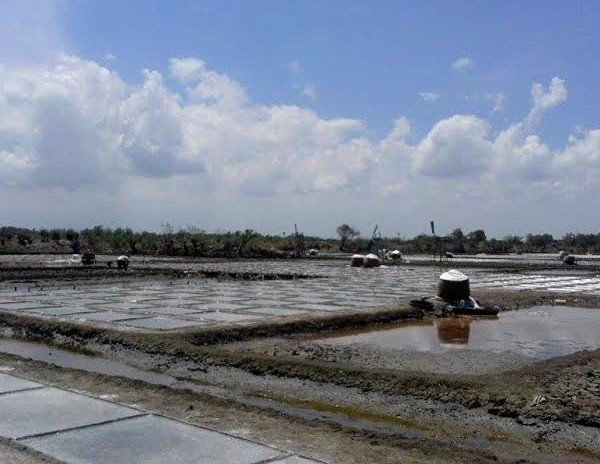Tucked away by the side of the highway leading into Bago City from Bacolod are seven hectares of coastal land converted into saltbeds. You won’t miss these wide patches of grids dotted by windmills. Yet, a lot of people do. Nondescript and hidden partially by tall wild grass along the road, the salt beds blend into the background for most part of the year.
For five months, our Bago asindero Poloy Veraguas tends to his asinan at Brgy. Sampinit. It is from December to May that he takes advantage of the rainless dry season raking in an average of 100 sacks of coarse sea salt from two hectares of saltbeds. That is, IF it does not rain.

We may see rain as a savior during the arid summer months, but while farmers are praying for rain, salt producers pray for sun all throughout the five crucial months. For each day of rain, what follows is a week for waiting for the fresh water to evaporate resulting to a frustrating waste of time.
The Bago asinan was started in the late 1960’s by the Tongoy family. When it is off salt-making season, the area becomes a fishpond. This is probably the only salt-making area that had terracotta tiles lining the beds. The tiles were sourced from Iloilo (Leganes?) and have a thickness of less than half an inch. I cannot estimate the shape nor the dimensions because every tile left is broken. One can still see the shards scattered across the unused old saltbeds. I was told that these tiles were set in and secured with wooden frames, but when the tile-lined beds were abandoned when the asinderos switched to plastic sheeting for lining, the wooden frames were taken out by *cough* “interested” parties.

Poloy laments the fact that in previous years, the sheets could last for two to three years. The quality has so declined that the plastic sheets need to be replaced every year now. This adds to production costs.
Just like the asindero of Bago, residents of Brgy. Patic in Pulupandan make a living from salt. The crystals here are coarser and whiter, and, after a taste test, proved to be saltier than the salt of Bago. Salt, of course, comes in many degrees of saltiness.
The same process of pumping sea water onto the saltbeds via windmills and harnessing the strong rays of the sun to evaporate water is also used in Patic. If Bago had its terra-cotta tile lining, the asinderos of old in Patic used flattened bamboo before there was plastic. That’s a lot of work considering that Patic has an estimate of 30 hectares of saltbeds.
Clay tiles are really expensive to use, but these last a very long time even when the beds are covered with seawater during conversion to fishponds. What’s more, clay is probably safer to dry salt on. Harvesters of fish just need to avoid stepping on the tiles.

Imagine a world without salt. That would be the end of us, literally. Worse than this is to imagine breakfast without our uga and lamayo. Imagine cheese-making without salt. Imagine a world without ham, and salted eggs. And binuro. And fermented black beans, patis and toyo. Excuse me while I dry my salty tears.

